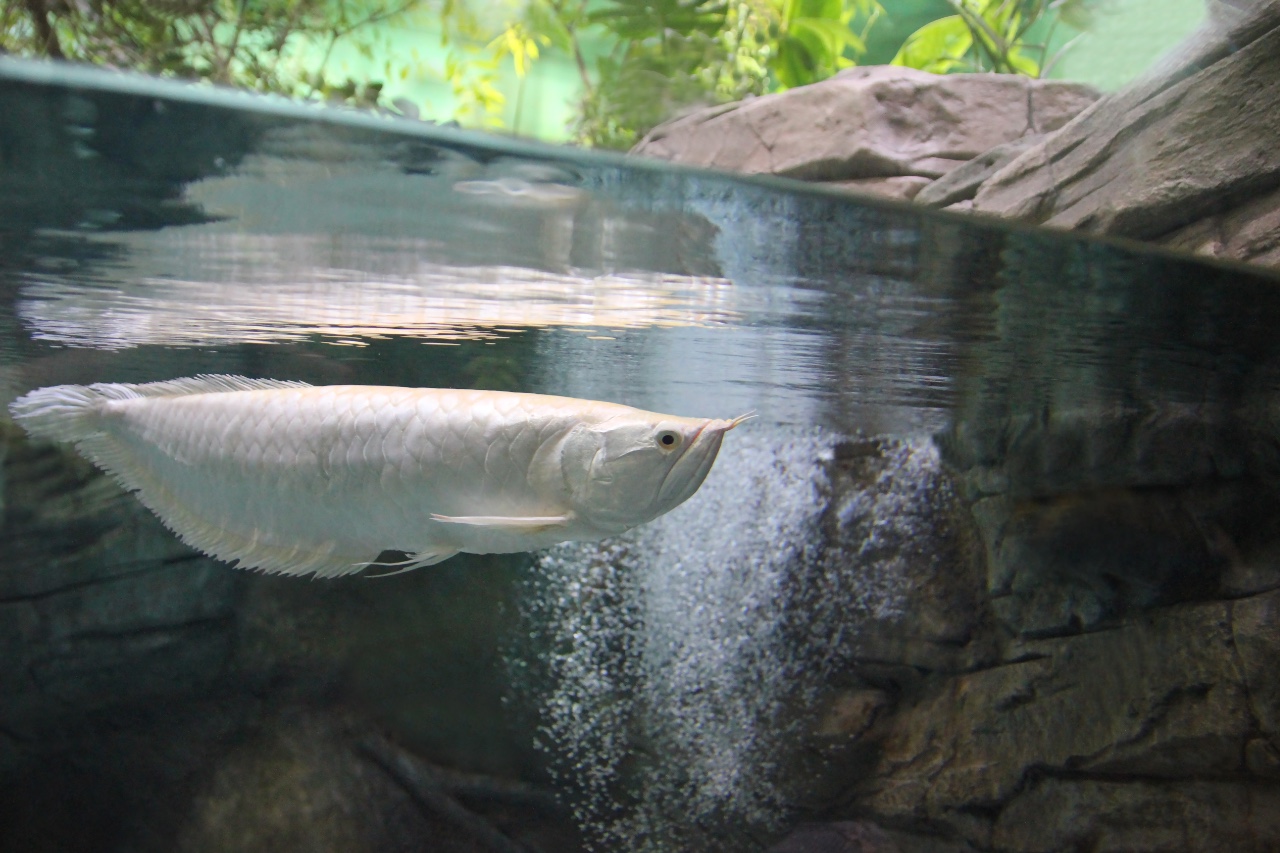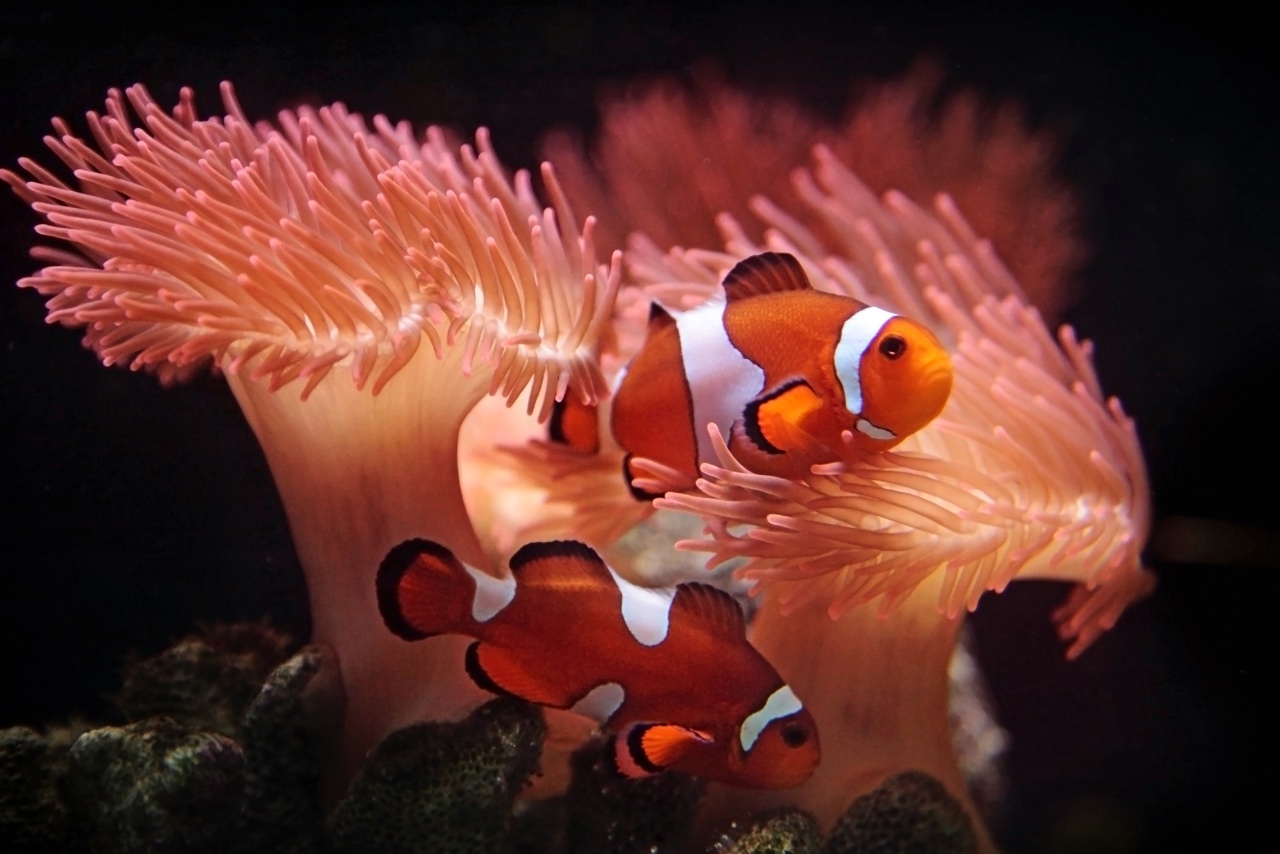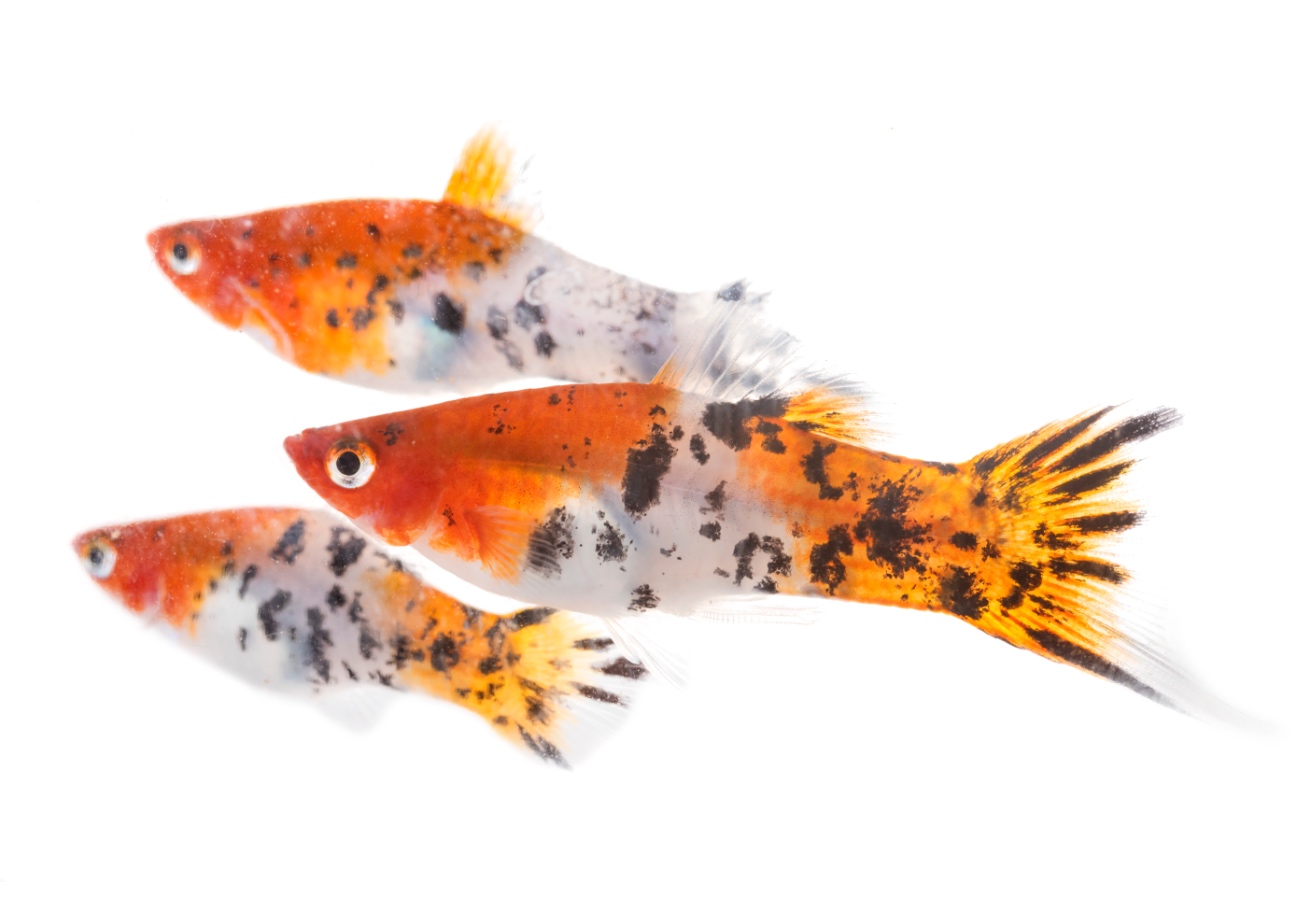Plecostomus, the most popular freshwater catfish, belongs to the family of Loricariidae.
Pleco fish has over 150 species, and the most in-demand species is Common Pleco.
They can reach a length of 24 inches. They are also known as Placo catfish or Suckerfish.
In this article, we will learn everything from how to care for Plecos to how to breed it.
| Category | Up to 12+ inches, depending upon the species |
|---|---|
| Family | Loricariidae |
| Temperament | Peaceful |
| Care Level | Medium |
| Diet | Omnivore |
| Lifespan | 10-15 Years |
| Size | Up to 12+ inches, depends upon the species |
| Color Form | Freshwater, Driftwood and Caves |
| Compatibility | Limited due to size constraints |
| Tank Set-Up | Freshwater, Driftwood, and Caves |
| Minimum Tank Size | 30 Gallons |
Plecostomus Overview

The Plecostomus, from the Hypostomus Plecostomus family, is found in the river streams of South America. They can be of all sizes and have peaceful and aggressive temperaments.
How big do plecos get?
Plecostomus size can be up to 24 inches.
How long does Plecostomus live?
They live for 10-15 years.
Plecostomus fish are quite popular among fish-keeping enthusiasts because of their appearance and the level of care required to keep them.
Pleco Fish Behavior
Pleco fish, short for Plecostomus fish, are nocturnal, and you will find them active all night but quiet the whole day. At night, these bottom-dwellers can be seen cleaning up the tank by sucking up algae. Their suckermouth does the job well. This is why they are also called Suckerfish.
During the day, they will look tired and hide behind the plants. These fishes are omnivores, but still, many believe that they are just algae eaters. This belief can lead to nutrient deficiency in your Pleco fish.
The major part of their diet includes algae, but they also need meat to complete their diet and remain healthy. They have a non-aggressive temperament so they can be easily kept in a community tank. However, their large size will require a lot of space to swim and do other activities.
Plecostomus Fish Appearance
The Plecos are not found in vivid coloration or patterns. Generally, they have a brown body with sand-colored spots or patterns.
Plecos have an elongated body just like any other fish of their family. The body, except the abdomen part, is covered with four rows of bone plates. It’s the reason they are referred to as ‘armored fish’ as well.
They have small eyes placed high up on their large head. These small eyes are covered with a membrane that allows them to control their exposure to light. They have suckermouth that helps them suck the algae from stones and corners of the tank effectively.
Their pectoral, dorsal, and tail fins are well-developed. Their dorsal and anal fin has one coarse ray each. The soft ray is seven in the dorsal fin and ranges between 3-5 in the anal fin.
They have an impressive moon-type tail that gets the most attention. They can grow up to 24 inches in the wild but only 15 inches in an aquarium.
Types of Plecos
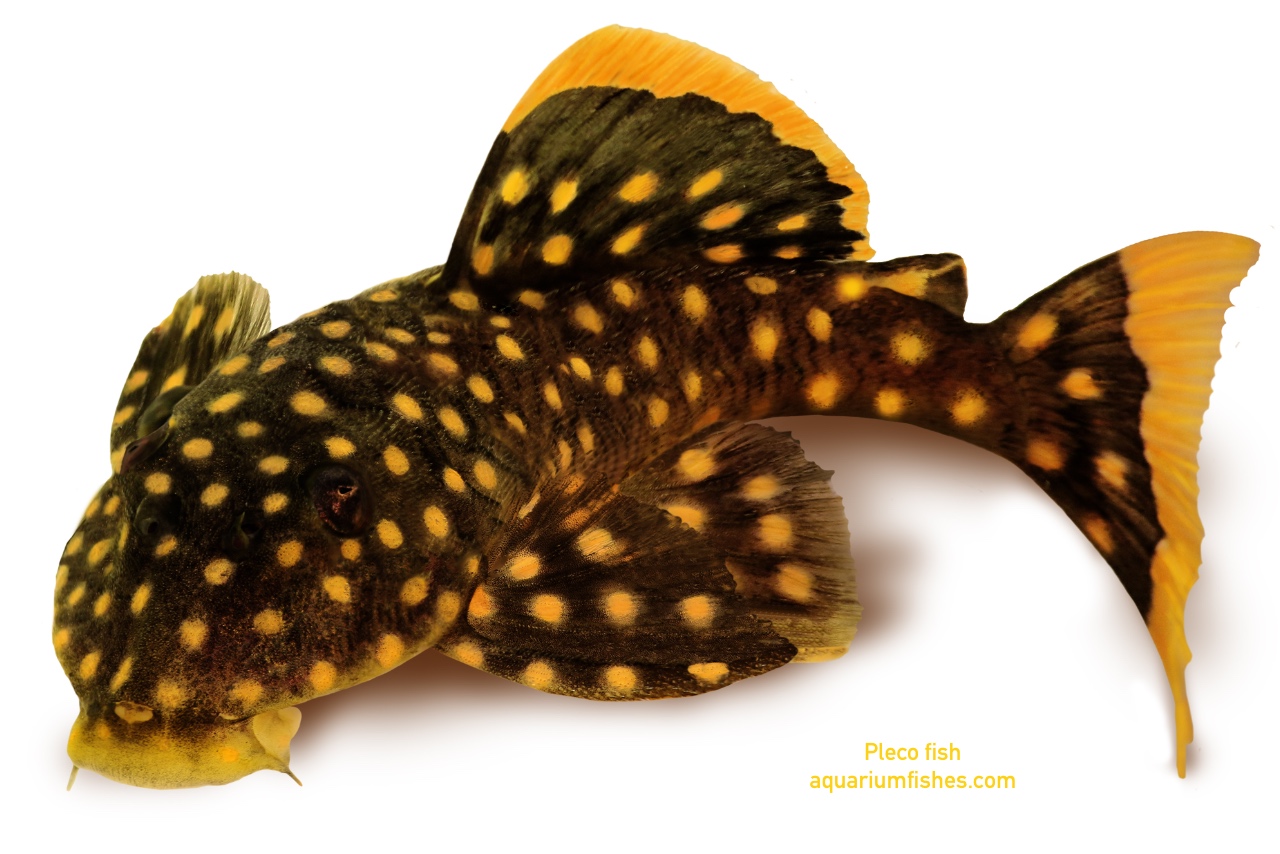
As discussed above, there are over 150 pleco species or different types of plecos. Some of them are quite aggressive and are not meant to be kept in the aquarium. But some species are perfect to be kept in the aquarium. Common types of pleco species are as follows –
- Royal Plecostomus (Panaque nigrolineatus)
- Bristlenose Plecostomus (Ancistrus sp.)
- Clown Plecostomus (Panaqolus maccus)
- Gold Nugget Plecostomus (Baryancistrus sp.)
- Snowball Pleco (Hypancistrus inspector)
- Zebra Plecostomus (Hypancistrus zebra)
- Sailfin Plecostomus (Pterygoplichthys gibbiceps)
Pleco Tank Setup
The aquarium conditions for any fish should match their native environment to make them comfortable and for their healthy growth. The same applies to plecos, but before setting up your tank, you should know everything about the fish. Different species of Plecostomus fish need different tank setups and water conditions.
Plecostomus Habitat
Pleco can survive in a wide variety of habitats, most of which originate from South America. They are habitual of fast-flowing streams and rocky substrates.
The smaller species, like Otocinclus Catfish, need 10 gallons, but the larger species, like Bristlenose, need at least 30 gallons to thrive.
The water conditions for Pleco fish should be as follows –
| Condition | Parameter |
|---|---|
| Water Temperature | 74o to 80o F |
| Water Alkalinity | 54ppm to 180ppm |
| Water pH | 7.0 to 8.0 |
Common Plecos are 2-4 inches long when they are young, and soon they’ll grow up to the size of 10-15 inches. As they grow, your small tank will not be enough for them. You’ll need at least a 150-gallon tank when they reach maturity.
The tank water should be fast-moving, just like in their natural habitat, the Amazon River basin. They also need many hiding places to rest in the daytime and dense vegetation to grow and thrive.
Make sure to place as many live hardy plants as possible in the tank. The common pleco will nibble on them for algae. The perfect plant for this is Java Moss, as it also grows quickly.
The substrate should be rocky like their natural habitat, and you should include as many caves or flower pots as possible to make a hiding place for them. You can also include driftwood, as it is perfect for algae growth and can become a hiding place for Plecostomus fish.
Including all these will not only make your aquarium look beautiful but will also ensure the safety of your Pleco fish.
Another thing to consider is maintaining water conditions. If the room temperature is below the required temperature, make sure to add a heater to the tank. Also, a canister filter should be added to make the water clean and breathable.
Change only 25% of the water in one or two weeks. This will help maintain the conditions and reduce the level of toxins in the tank.
Pleco Tank Size
As we learned earlier, different species of pleco need different water conditions. They need different tank capacities as well. Below are the minimum tank capacities for different species –
| Species | Tank capacity |
|---|---|
| Snowball Pleco (Hypancistrus inspector) | 30 gallons |
| Clown Plecostomus (Panaqolus maccus) | 30 gallons |
| Gold Nugget Plecostomus (Baryancistrus sp.) | 50 gallons |
| Royal Plecostomus (Panaque nigrolineatus) | 125 gallons |
| Bristlenose Plecostomus (Ancistrus sp.) | 25 gallons |
| Sailfin Plecostomus (Pterygoplichthys gibbiceps) | 125 gallons |
| Zebra Plecostomus (Hypancistrus zebra) | 30 gallons |
Plecostomus Food and Diet
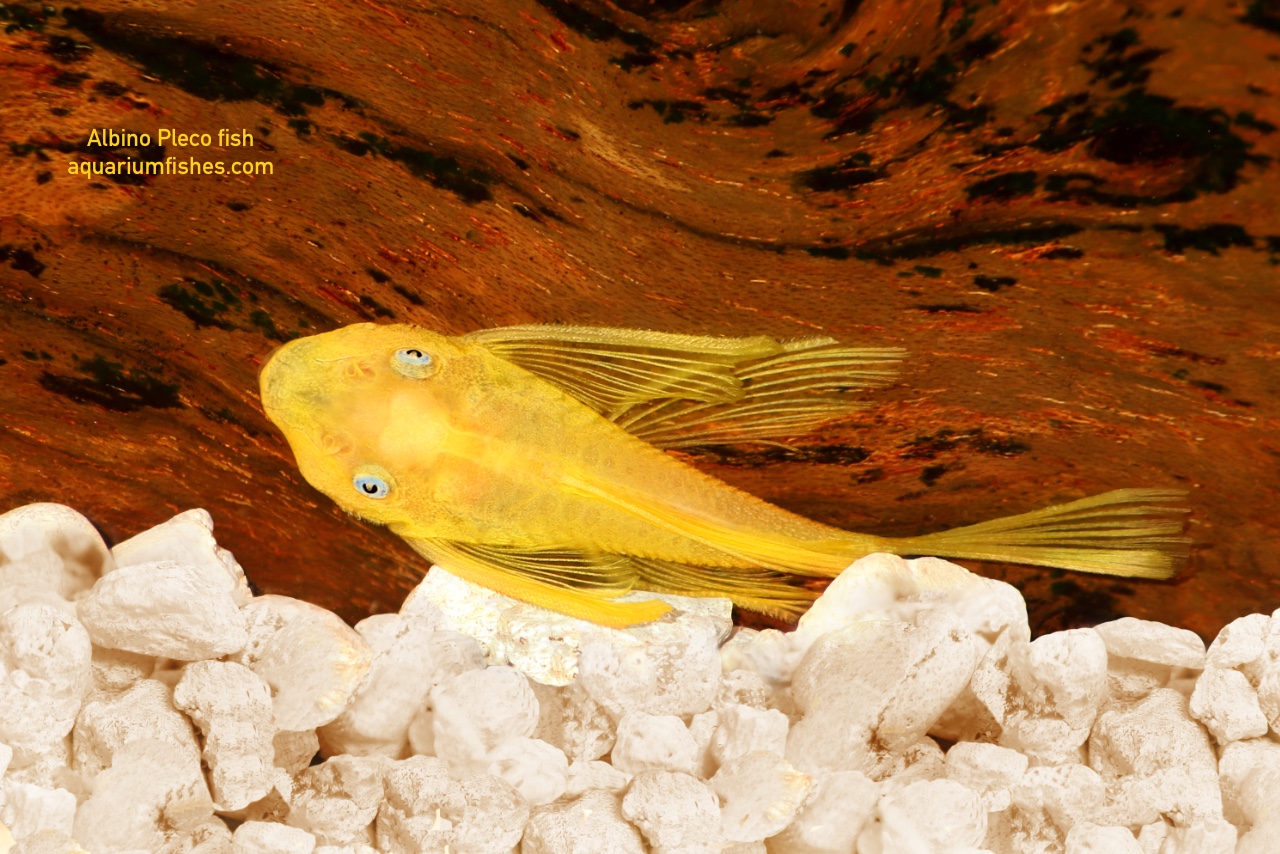
What do Plecos eat?
Plecos are known as ‘algae eaters,’ and most people think this is the only diet they need. It is not true. Apart from being algae eaters, they are omnivores, so they need both algae and meat to be healthy.
Most Plecos feed on small fish, crustaceans, and invertebrates in the wild. In contrast, some feed on wood only. Make sure you research the Plecostomus species before adding anything to their diet. It is important to keep them healthy.
As a supplement, add high-quality pellets or wafers to their diet. They need a lot of fiber, so feed them vegetables as well, such as zucchini, lettuce, cucumbers, spinach, and shelled peas. Also, make sure to add driftwood, which is good for digestion.
You can include earthworms, bloodworms, larvae, and crustaceans in the meat. These nocturnal worms will feed actively and scavenge for food at night or when the tank light is off.
Pleco Tank Mates
When common Pleco fish are young, they are quiet and peaceful. They make a perfect companion for other peaceful fish and can be placed in the community tank. Compatible fish include Cichlids, Tetras, and Guramis.
Avoid keeping Plecos with Discus and Angelfish, as they are known to nibble on their fins and tails. Also, make sure not to put any fish that are small enough to fit in their suckermouth. They will become the food of your common pleco.
They grow quicker than any other fish, and you can place them in a separate tank as they grow. A smaller and more crowded tank will not give them ample space to swim and will stress them.
If you want to keep two Pleco fish, you’ll need an aquarium with around 300 gallons. This can become challenging for beginners, and only an experienced aquarist can maintain that large tank.
Pleco Care and Health
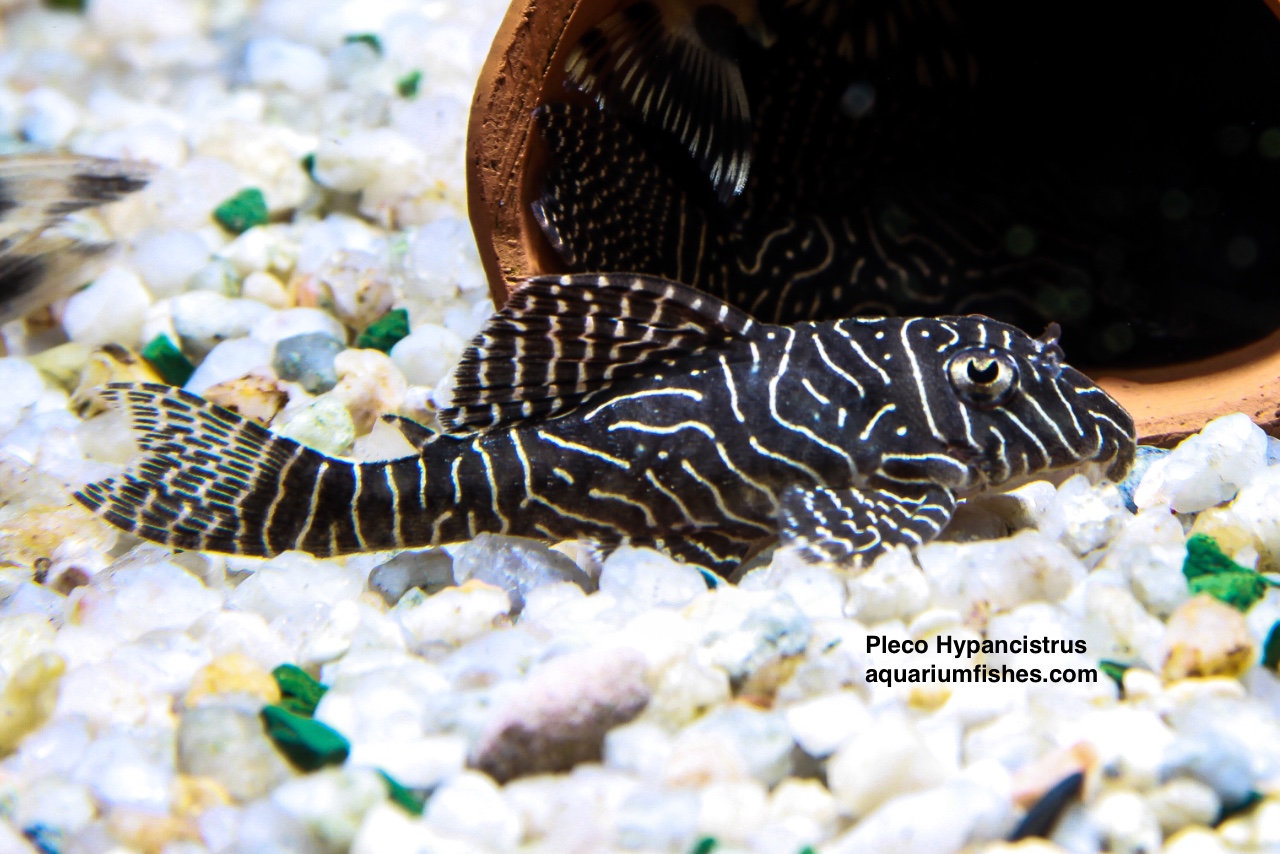
A Plecostomus fish has healthy eyes, is always active at the bottom of the aquarium, eats continuously, and cleans the aquarium glass and other objects.
Don’t overcrowd your tank; a common pleco fish can be stressed. Water should be changed regularly, and proper filtration should be set up. You can quickly identify a sick pleco if you see the loss of color, cloudy eyes, frayed fins, labored breathing, and spots or fungus on the mouth or body.
To get rid of cloudy eyes, filter your fish tank water and treat it properly.
As you see, pleco fish have spots on their bodies. Rub it on the objects and quarantine them immediately. You may need to do a two-week ich remedy in a quarantine tank.
Pleco Breeding
As we already discussed, they are large and thus need a large tank. This requirement makes it quite impossible for any aquarist to breed them in captivity, which may be why little is known about Plecostomus breeding.
In the wild, they spawn in caves or hide, laying a large number of eggs on a flat surface. The male guards and takes care of the eggs until they hatch. The fries need constant care and feeding. Their diet mainly includes a large amount of protein.
Should You Keep Plecostomus?
Common Plecos require a lot of commitment and care, especially when they are young. We have provided all the information related to their diet, tank setup, and breeding. It will help you decide if this fish from the Loricariidae family suits you.
Their size and tank requirements can make everything look complex, so they are generally kept by experienced fishkeepers only. For beginners, things can become quite messy and challenging as they grow.
Are you planning to have Common Pleco for your aquarium? Or do you already have one? Let us know in the comment if we forgot to mention anything about them.

